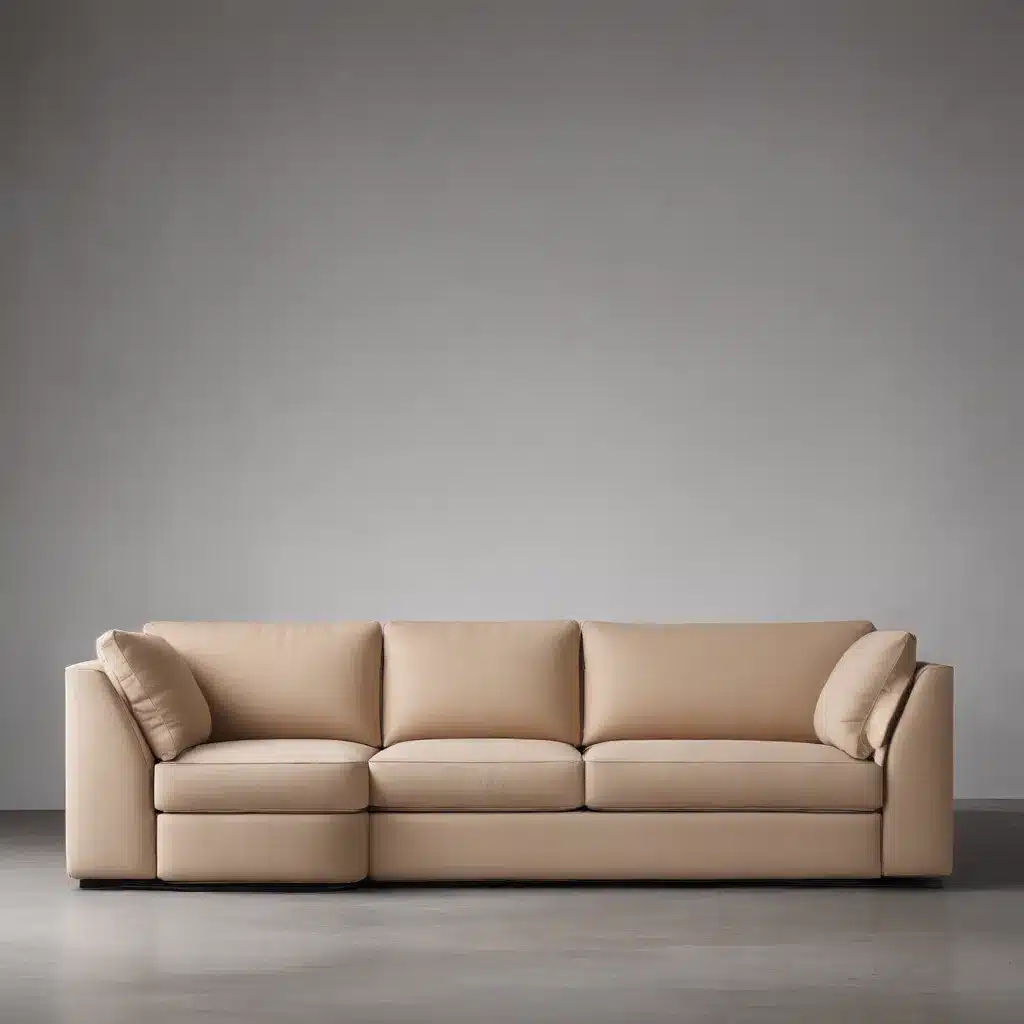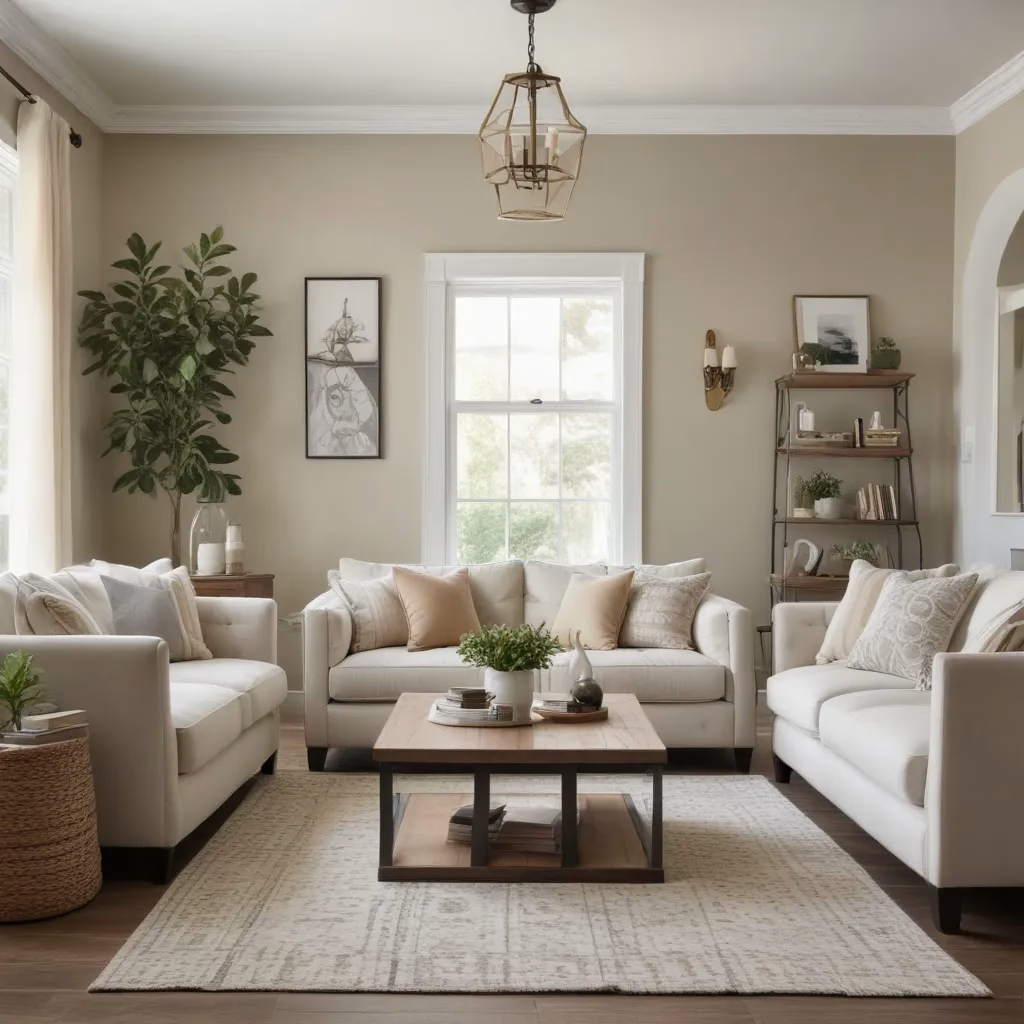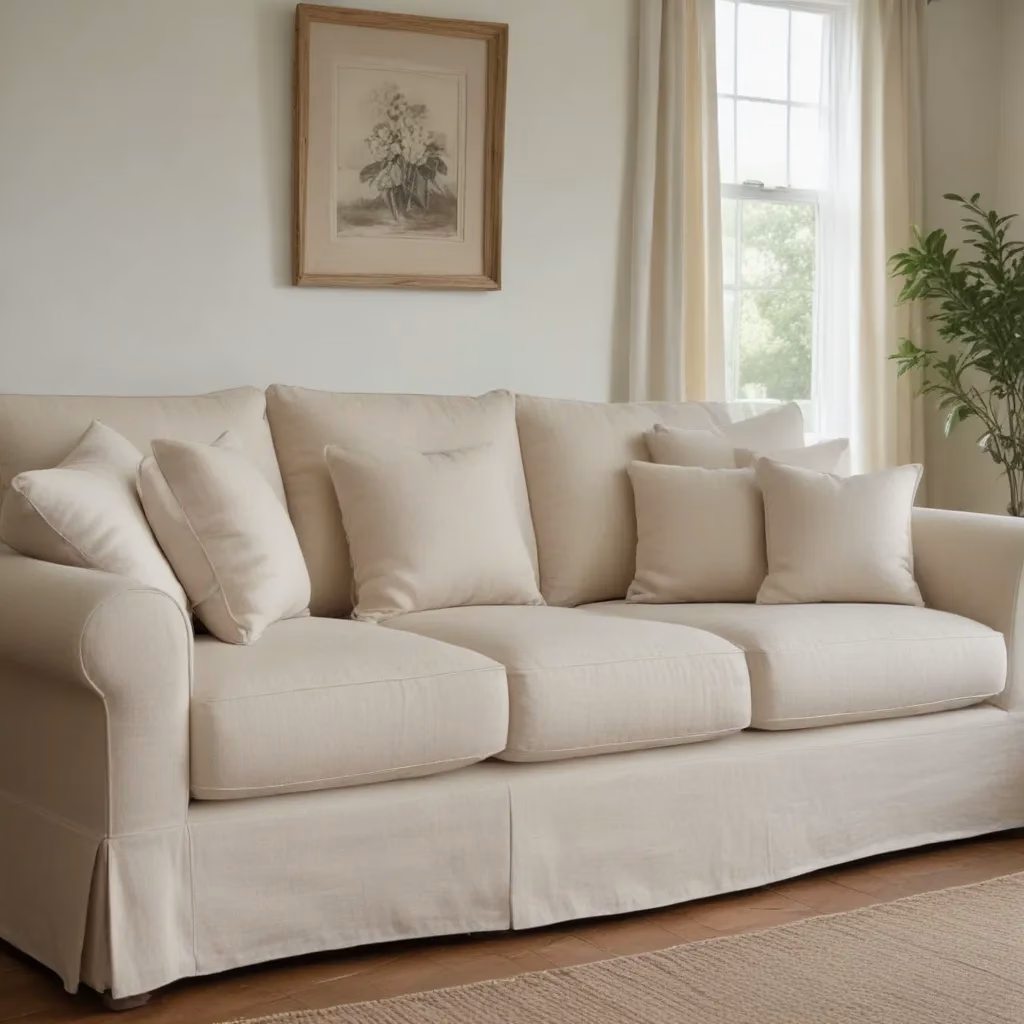
As a furniture specialist with years of experience in the industry, I’ve seen countless trends come and go. However, one that has caught my eye recently is the rise of sculptural profiles in sofa design. These architectural structures are not just visually appealing; they’re reshaping how we think about comfort and style in our living spaces.
The Evolution of Sofa Design
Sofa design has come a long way since the days of overstuffed, bulky pieces that dominated living rooms. Today’s sofas are sleek, sophisticated, and often serve as the centerpiece of a room’s design. This evolution reflects changing lifestyles and aesthetic preferences.
I remember when sofas were primarily about comfort, with little regard for form. Now, homeowners and designers alike are seeking pieces that balance comfort with visual appeal. It’s not uncommon to hear clients ask for a sofa that’s “a work of art” – and that’s exactly what these sculptural profiles deliver.
The shift towards more architectural designs isn’t just about looks. It’s a response to smaller living spaces, open-concept homes, and a desire for furniture that makes a statement. I’ve noticed that clients are increasingly willing to invest in high-quality, uniquely designed sofas that serve as conversation starters.
Characteristics of Sculptural Sofa Profiles
When we talk about sculptural profiles in sofas, we’re referring to designs that go beyond the traditional boxy shape. These sofas often feature:
- Curved lines and organic shapes
- Asymmetrical elements
- Unusual angles and geometric forms
- Mixed materials, such as wood and metal accents
- Elevated bases that create a sense of lightness
One of the most striking examples I’ve seen recently was a sofa with a continuous curved back that seamlessly transitioned into the armrests. It looked more like a modern art installation than a piece of furniture, yet it was surprisingly comfortable.
These sculptural elements aren’t just for show. They can actually enhance the functionality of a sofa. For instance, a high-backed design with curved edges can create a sense of privacy in an open space, perfect for those impromptu work-from-home days.
Integrating Sculptural Sofas into Your Space
Incorporating a sculptural sofa into your home requires careful consideration. Here are some tips I often share with clients:
-
Consider the scale: Sculptural sofas can be statement pieces, so ensure your room can accommodate the size and visual weight.
-
Balance with other elements: Pair a bold sofa with simpler pieces to avoid overwhelming the space.
-
Play with sight lines: Use the unique shapes to create interesting views from different angles in the room.
-
Think about functionality: While aesthetics are important, don’t forget that a sofa should still be comfortable and practical for daily use.
-
Coordinate with your overall design: Choose a sculptural sofa that complements your existing decor style, whether it’s modern, eclectic, or minimalist.
I once worked with a client who was hesitant about introducing a sculptural sofa into her traditional living room. We found a piece with subtle curves and a classic fabric that beautifully bridged the gap between traditional and contemporary styles. The result was stunning – a room that felt fresh and current while still honoring its traditional roots.
Materials and Textures in Sculptural Sofa Design
The choice of materials plays a crucial role in the success of a sculptural sofa design. I’ve seen an interesting trend towards mixing textures and materials to enhance the architectural feel of these pieces.
Upholstery Choices
When it comes to upholstery, the options are vast. Here’s a quick overview of popular choices:
| Material | Characteristics | Best for |
|---|---|---|
| Leather | Sleek, durable | Modern, minimalist designs |
| Velvet | Luxurious, rich | Glamorous, art deco-inspired pieces |
| Linen | Casual, textured | Organic, nature-inspired forms |
| Wool | Warm, versatile | Sculptural pieces with a cozy feel |
The texture of the fabric can either accentuate or soften the sculptural elements of the sofa. A smooth leather, for example, can highlight crisp lines and angles, while a nubby wool might soften the overall look.
Structural Elements
It’s not just about the upholstery, though. The structural elements of sculptural sofas often incorporate materials like:
- Metal frames for clean, precise lines
- Wooden elements for warmth and organic shapes
- Acrylic or glass for a contemporary, airy feel
I recently worked on a project where we used a sofa with a brass frame that curved around the back and sides. The metal added a touch of glamour and really emphasized the sculptural nature of the piece.
The Impact of Sculptural Sofas on Room Layout
One of the most exciting aspects of working with sculptural sofas is how they can transform a room’s layout. Unlike traditional sofas that are typically placed against a wall, these pieces often work best as focal points in the center of a space.
I’ve found that floating a sculptural sofa in the middle of a room can create distinct zones in open-plan areas. For instance, in a large living area, a curved sofa can carve out an intimate conversation nook while still maintaining an open feel.
These sofas also offer more flexibility in terms of traffic flow. Their unique shapes often allow for multiple pathways around them, making them ideal for spaces that need to accommodate various functions or frequent rearrangement.
Maintenance and Care for Sculptural Sofas
While sculptural sofas are undoubtedly beautiful, they do require some special consideration when it comes to maintenance. Here are some tips I always share with clients:
-
Regular cleaning: Use a soft brush attachment on your vacuum to gently remove dust and debris from crevices and curves.
-
Spot cleaning: Be cautious when spot cleaning. Always test any cleaning solution on a hidden area first, as the unique shapes can make it challenging to clean evenly.
-
Professional care: Consider professional cleaning services that have experience with high-end, uniquely shaped furniture.
-
Rotation: If possible, rotate the sofa periodically to ensure even wear, especially if it’s placed in direct sunlight.
-
Protective treatments: Ask about protective treatments that can be applied to the upholstery to guard against stains and wear.
I once had a client with a beautiful sculptural sofa in white fabric. We implemented a strict no-shoes, no-food policy in that room, and it has remained pristine for years!
The Future of Sofa Design
As we look to the future, I believe we’ll see even more innovation in sofa design. The line between furniture and art will continue to blur, with sofas becoming true sculptural centerpieces in our homes.
I’m particularly excited about the potential for customization. With advancements in manufacturing technologies, it’s becoming easier for designers to create bespoke sculptural sofas tailored to individual spaces and preferences.
We’re also likely to see a greater emphasis on sustainability in these designs. I’m already noticing a trend towards using recycled materials and eco-friendly manufacturing processes in high-end furniture design.
Choosing the Right Sculptural Sofa for Your Home
Selecting the perfect sculptural sofa for your space can be a daunting task. Here are some questions I always ask my clients to consider:
- What’s the primary function of the space where the sofa will be placed?
- How many people do you need to seat comfortably?
- What’s your existing decor style?
- Are there any architectural features in the room that the sofa should complement or contrast?
- What’s your budget?
Remember, a sculptural sofa is an investment piece. It’s worth taking the time to find one that not only looks stunning but also meets your practical needs.
Complementing Your Sculptural Sofa
Once you’ve chosen your sculptural sofa, the next step is to complement it with the right accessories and surrounding furniture. Here are some ideas:
-
Coffee tables: Opt for pieces with simple, clean lines that won’t compete with the sofa. Glass or acrylic tables can be a great choice as they allow the sofa to remain the focal point.
-
Area rugs: Choose a rug that echoes the curves or angles of your sofa. This can help to ground the piece and create a cohesive look.
-
Lighting: Consider sculptural lighting fixtures that complement the lines of your sofa. A statement floor lamp or uniquely shaped pendant can create an interesting dialogue with the sofa’s form.
-
Wall art: Large-scale abstract art can be a beautiful backdrop for a sculptural sofa, enhancing its artistic qualities.
-
Throw pillows: Use pillows to add pops of color or introduce contrasting textures. Just be careful not to overdo it – you want the sofa’s shape to remain visible.
I once worked on a project where we paired a bold, curved sofa with a series of minimalist, framed prints. The contrast between the organic shape of the sofa and the geometric lines of the frames created a dynamic, visually interesting space.
The Psychology of Sculptural Sofa Design
It’s fascinating to consider the psychological impact of sculptural sofa designs. These pieces do more than just provide seating; they can influence how we perceive and interact with our living spaces.
Curved shapes, for instance, are often associated with comfort and relaxation. They can make a room feel more welcoming and intimate. On the other hand, angular designs with sharp lines can create a sense of energy and modernity.
I’ve noticed that clients who choose sculptural sofas often report feeling more creative and inspired in their living spaces. There’s something about being surrounded by artful design that seems to stimulate the mind.
Sculptural Sofas in Different Design Styles
One of the great things about sculptural sofas is their versatility. They can work in a variety of design styles:
- Modern: Clean lines and minimalist shapes complement contemporary interiors.
- Mid-century: Many sculptural sofas draw inspiration from mid-century design, making them perfect for this style.
- Eclectic: A statement sofa can be the perfect anchor in a mix-and-match eclectic space.
- Scandinavian: Look for pieces with light wood elements and neutral fabrics.
- Art Deco: Curved forms and luxurious materials fit beautifully with this glamorous style.
I recently worked on a project where we incorporated a sculptural sofa into a traditional English country-style living room. The juxtaposition of the modern sofa against the classic background created a fresh, unexpected look that the client loved.
Final Thoughts on Sculptural Sofa Design
As we wrap up our exploration of sculptural sofa designs, I’m reminded of why I fell in love with furniture design in the first place. These pieces represent the perfect marriage of form and function, art and utility.
Whether you’re a homeowner looking to make a statement in your living room or an interior designer seeking to push the boundaries of traditional design, sculptural sofas offer exciting possibilities. They challenge our perceptions of what a sofa should be and invite us to reimagine our living spaces.
Remember, the best sofa for your space is one that not only looks beautiful but also enhances your daily life. Don’t be afraid to take risks and choose a piece that truly speaks to you.
If you’re interested in exploring more about sofa design and care, I recommend checking out Sofa Spectacular. They offer a wealth of information on the latest trends in sofa design, as well as practical tips for maintaining your furniture.
In the end, your home should be a reflection of your personal style and a space that brings you joy. A well-chosen sculptural sofa can be the perfect centerpiece for creating a living area that’s both beautiful and functional. Happy decorating!



